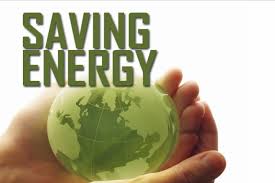Expenditure on energy and utility bills are among the highest in a typical American household budget. Many families struggle to meet some of these basic costs because they tend to escalate with every season. While some of the homeowners have given up as far as energy savings are concerned, the good news is, it is possible to have huge energy savings especially if you carefully consider your household appliances.
These energy saving tips have also been recommended by the Department of Energy and as such they are reliable and can be implemented.
Water Heater Savings
On average, homeowners pay 18% for water heating. An easier way to make savings here is to invest in a high efficiency water heating system during replacement. Since most systems in the market are preset, you should adjust this and set your heater to 120 degrees. Insulate the first few feet of pipes that come in and go out of the water heater. This insulation will significantly reduce energy loss as the hot water flows through the pipe.
Water Conservation
By adopting a less is more mindset, you can save not only on water bills, but also on heating expenses. All you need to do is adjust your water usage pattern sin the house by instance taking shorter showers and installing aerators and low-flow showerheads in your home. These devices help in reducing the quantity of water that flows through them.
Monitoring Your Appliance Usage
Stoves, refrigerators and dishwashers are appliances people use regularly which can contribute to huge amount in energy bills. In order to fight this, consult the dishwasher manual and ensure it is set at its lowest possible temperature which is normally about 120 degrees. Before loading eth dishwasher, ensure young scrap off food remains from the dishes instead of just running them underwater. This will help you save on water and energy because you won’t have to run the dishwasher for a long time so as to remove the food buildup.
When it comes to the refrigerator, ensure that is always set to consume the lowest energy possible. Keep the freezer at zero degrees while the fridge should be set at ideal temperature of between 37 and 40 degrees. In the event your fridge doesn’t have a display for the temperature, you can use thermometer for accurate reading. Always keep an eye on the seal of the fridge door because leakage can influence energy consumption.
In the case of the stoves, ensure you use a properly sized pan on the stovetop and make use of a toaster when heating food because it uses lesser energy compared to the oven. Regular cleaning of the stovetop particularly the burners will help it to work more efficiently.





 March 27th, 2016
March 27th, 2016  adam levi
adam levi 
 Posted in
Posted in 

